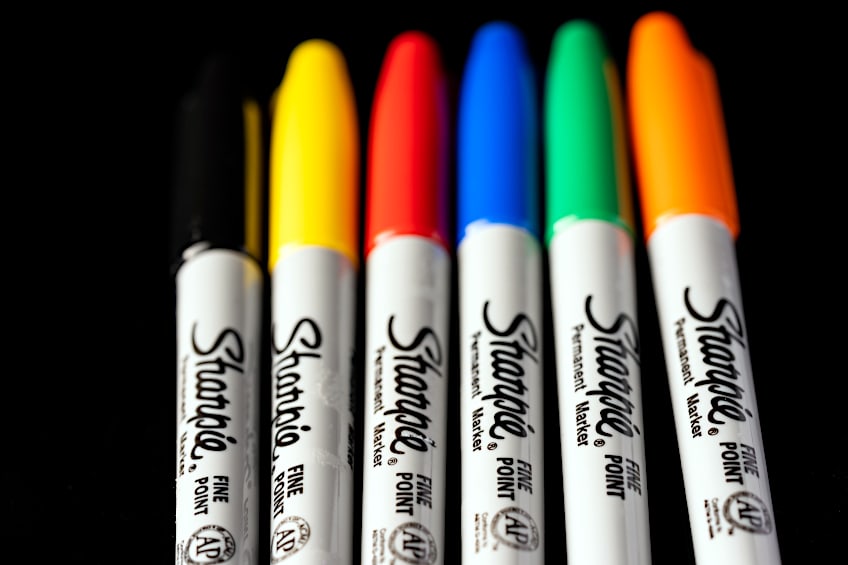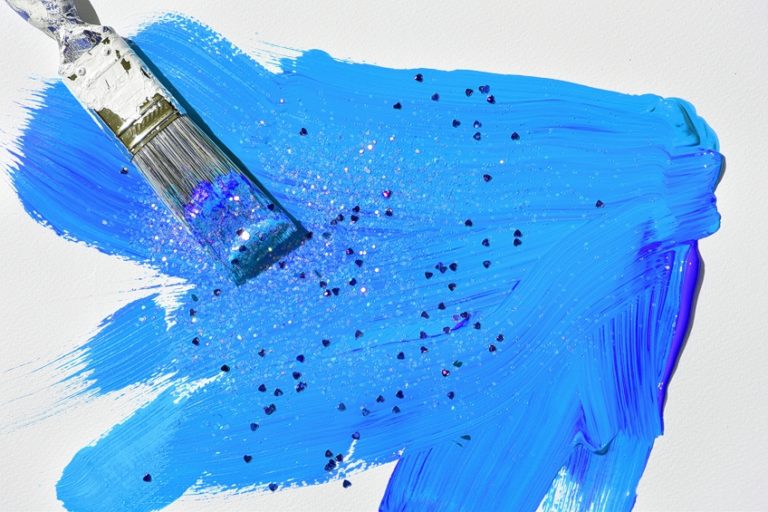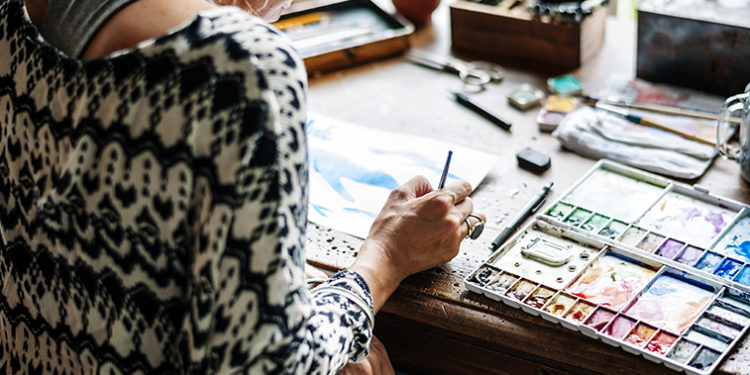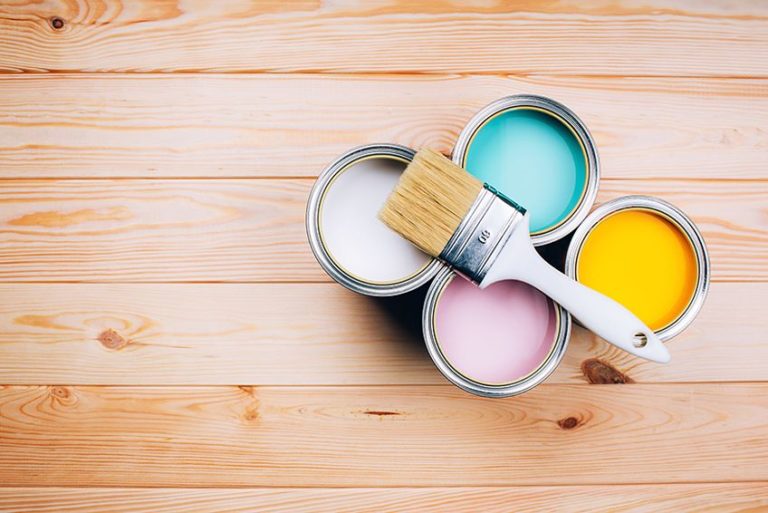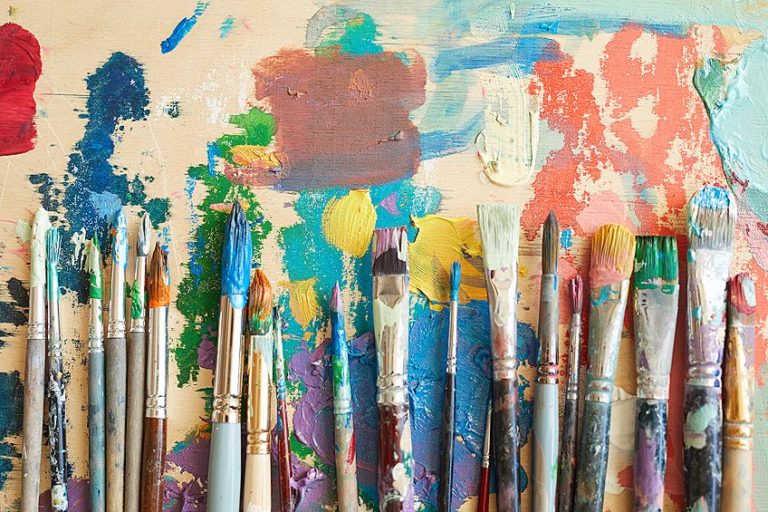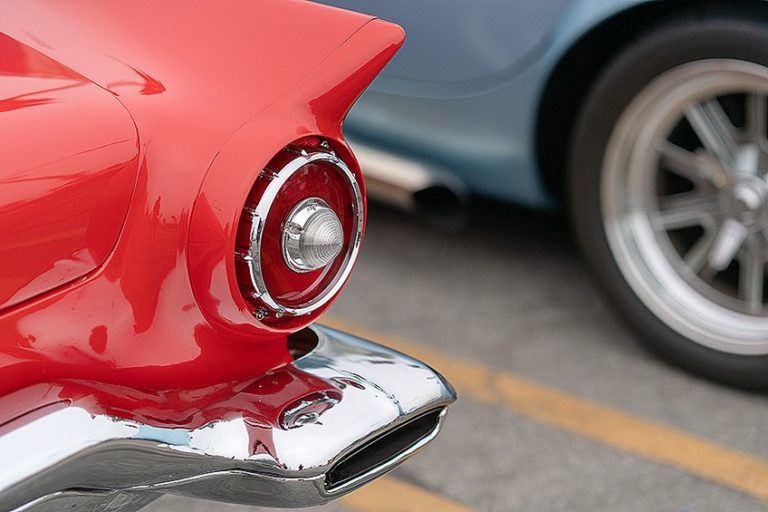Are Sharpies Toxic? – Know How Safe Your Favorite Pens Are
This post may contain affiliate links. We may earn a small commission from purchases made through them, at no additional cost to you.
Whether it is labeling, drawing, or coloring, you have probably used a Sharpie marker before. They also have a distinct smell, which makes you wonder, “are Sharpies toxic?”. As a result, we often come across questions like, “is Sharpie bad for your skin”; “can you get ink poisoning from a Sharpie”; and “is it bad to draw on yourself with Sharpie?”. In this article, we will delve into the question of whether Sharpies are toxic or not, and provide you with what you need to know when using them.
Table of Contents
- 1 Key Takeaways
- 2 What Are Sharpies?
- 3 What Are Sharpies Made Of?
- 4 Are Sharpies Toxic?
- 5 How to Use Sharpies Safely
- 6 Alternatives to Sharpies
- 7 How Can You Properly Store and Dispose of Sharpies to Minimize Any Potential Risks?
- 8 Frequently Asked Questions
Key Takeaways
- Sharpies are not toxic when used as intended.
- While the chemicals in Sharpies are generally safe, ingesting or inhaling them can lead to health issues.
- Sharpie ink is also not recommended for use on skin, as the solvents in the ink can cause skin irritation or allergic reactions.
- If you or anyone you know displays symptoms of ink poisoning, seek medical assistance immediately.
What Are Sharpies?
Before we delve into the question “are Sharpies toxic”, it is important that we first answer “what are Sharpies?”. In short, Sharpies are a popular brand of permanent markers that are commonly used for writing, drawing, and coloring on a variety of surfaces.
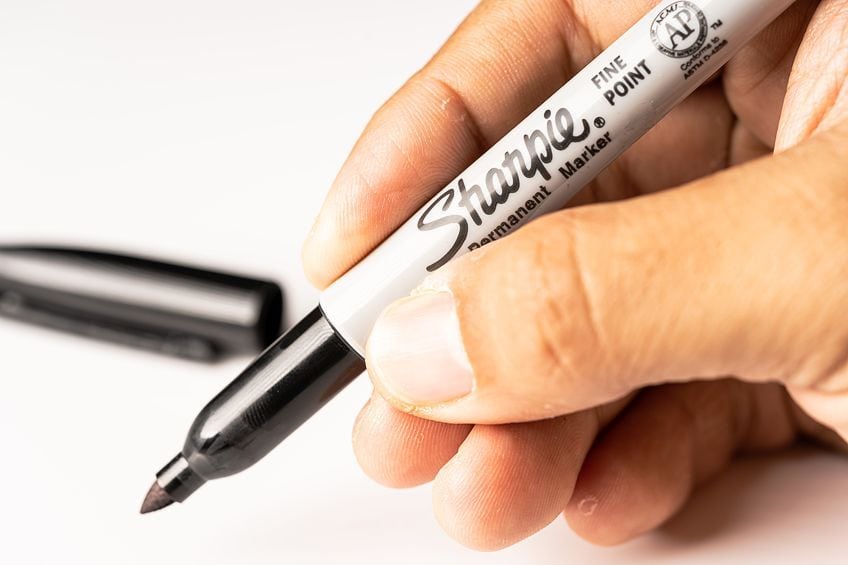
Dating back to the 1960s, the Sharpie brand is known for its vivid colors and long-lasting qualities as well as resistance to water, fading, and abrasion. Sharpies come in a wide range of colors and tip sizes to suit different needs and preferences. Their popularity has seen them being used in schools, offices, and homes for various purposes, such as labeling, arts and crafts, and DIY projects.
Since they are now used almost everywhere, many people have raised concerns about the safety of Sharpies, particularly in terms of their potential toxicity.
What Are Sharpies Made Of?
As we explore the potential toxicity of Sharpies, we also need to understand how they are made. Most Sharpies are made of a blend of solvents, pigments, and resins. The pigments are what give the markers their color, while the solvents and resins help to keep the ink flowing and provide a smooth writing experience.
Some of the common solvents used in Sharpies include isopropyl alcohol, toluene, and xylene. So, are Sharpies toxic?
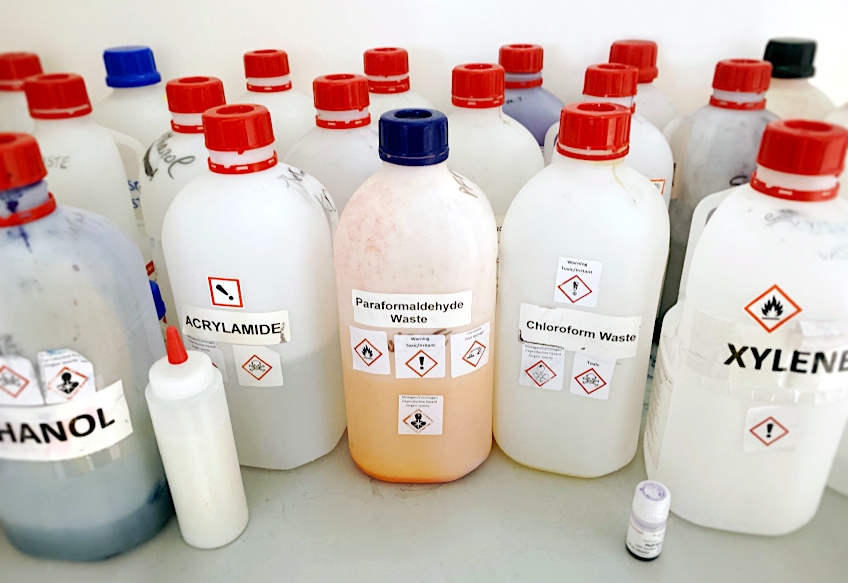
Are Sharpies Toxic?
You will be happy to hear that Sharpies are generally considered non-toxic when used as intended. However, they should not be ingested or used on skin or other sensitive areas, as the solvents and pigments used in the markers can be toxic and cause skin irritation or other adverse reactions.
We recommend that you use them in a well-ventilated area while avoiding prolonged exposure to the fumes. Inhaling the fumes from permanent markers can cause headaches, nausea, dizziness, and eye irritation.

In addition, it is also important to keep Sharpies out of reach of children and pets. While the ink is not necessarily toxic, ingesting the marker can cause a choking hazard or gastrointestinal distress, and other health issues.
Is Sharpie Bad for Your Skin?
Is it bad to draw on yourself with a Sharpie? It is important that you understand that Sharpies are not intended for use on the skin and may cause skin irritation or allergic reactions if applied directly to the skin. This is because the ink contains solvents and chemicals that are not designed for use on human skin and can cause itching, redness, or even chemical burns in some rare cases.
However, do not worry. Sharpies are considered safe for incidental skin contact, such as accidentally touching the marker while writing on a surface. Just make sure that the ink is not left to be absorbed into the skin because it can be easily washed off with soap and water.

For whatever reason, if you need to write or draw on your skin, it is best to use products that are specifically formulated for that purpose. This includes skin-safe markers and temporary tattoos. These products are made with non-toxic materials that are safe for skin contact and can be easily removed without causing harm or irritation.
What Happens If You Use a Sharpie on Your Skin?
From the above, we learned that using a Sharpie on your skin can cause skin irritation, itching, and redness. In some cases, the ink from the marker can cause a more serious reaction. Sharpie ink does contain various chemicals that may cause skin reactions in some people. If you have a known sensitivity to certain chemicals or have a history of skin allergies, it is important to use caution when using Sharpies or any other products that may contain similar chemicals.
What Should You Do If You Experience Skin Irritation or an Allergic Reaction to Sharpie?
If you experience skin irritation or an allergic reaction while using a Sharpie, it is important to stop using the product immediately and wash the affected area with soap and water. If the irritation persists or if you experience any other symptoms, such as redness, itching, or swelling, seek medical attention.
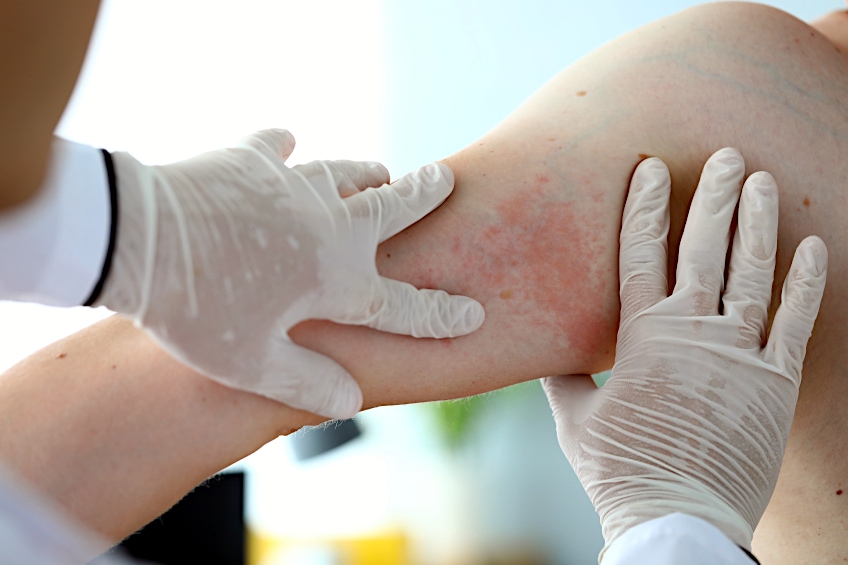
There are cases where a mild reaction to Sharpie ink can be treated with over-the-counter antihistamines or topical creams. However, if the reaction is severe or accompanied by other symptoms such as difficulty breathing or swelling of the throat or face, seek emergency medical attention immediately.
It is also important to avoid getting Sharpie ink in your eyes, mouth, or other mucous membranes, as this can cause additional health problems. If you accidentally get Sharpie ink in these areas, rinse with plenty of water and seek medical attention right away.
What Happens If You Ingest a Sharpie?
You might also be wondering what happens if you ingest a Sharpie? While the chemicals in Sharpie ink are generally not considered highly toxic, ingesting large amounts can potentially lead to serious health issues.
Note that, in addition to ingestion, it is also important to avoid inhaling Sharpie fumes, as they may cause respiratory irritation or other health problems.
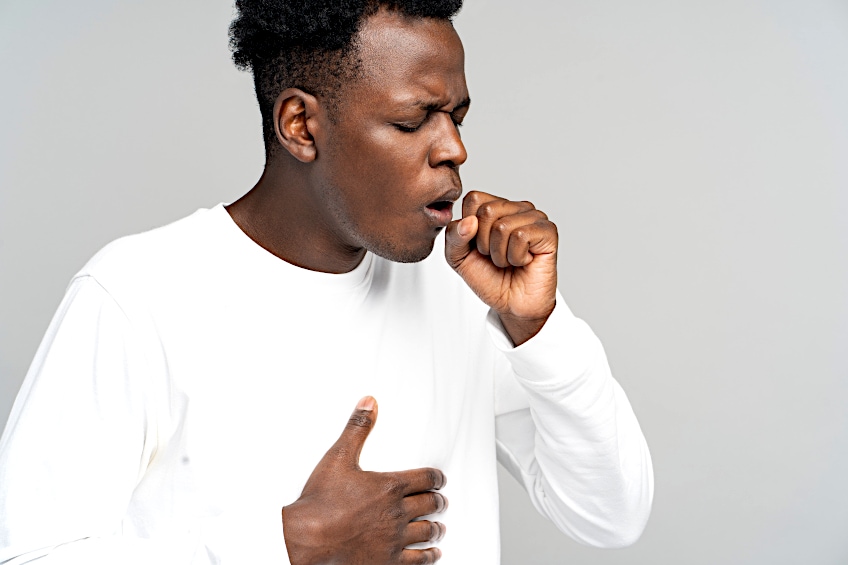
Depending on the amount consumed or inhaled and the individual’s overall health, they might end up displaying symptoms of ink poisoning. Some common symptoms of Sharpie ingestion include nausea, vomiting, abdominal pain, and confusion. In severe cases, this can lead to wheezing, coughing, shortness of breath, and other symptoms of respiratory distress as well as unconsciousness, and even death.
What Should You Do If You Accidentally Ingest Sharpie Ink?
If you or someone you know has ingested a Sharpie and displaying the symptoms of ink poisoning, do not try to induce vomiting or attempt to treat the symptoms yourself. Instead, call your local poison control center or seek medical attention right away.
There are cases where you will experience symptoms such as coughing, wheezing, or shortness of breath while using Sharpies. Simply, move to a well-ventilated area and seek medical attention if necessary.
Overall, while Sharpies are generally safe when used as directed, it is important to take appropriate precautions and seek medical attention if any adverse reactions occur.
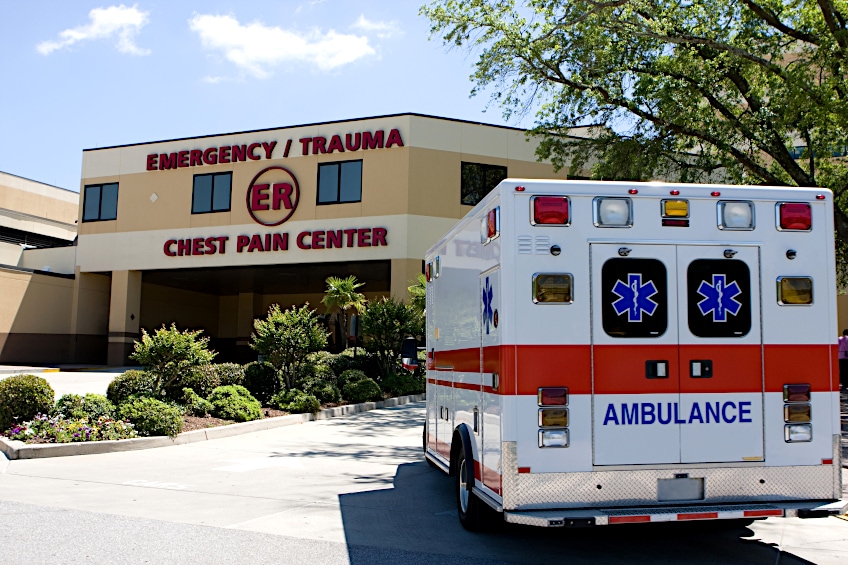
Can You Get Ink Poisoning from a Sharpie?
As pointed out before, ink poisoning from a Sharpie is rare. This is because the ink is made from chemicals that are generally not considered highly toxic. However, poisoning is possible, especially if the marker is ingested or used inappropriately. Sharpies are not intended for internal use and should not be used on the skin, mucous membranes, or near the eyes or mouth.
The ink in Sharpies is made of various chemicals, including solvents and pigments, that may be harmful if ingested or inhaled in large quantities. Depending on the severity of exposure, you might experience symptoms of ink poisoning as highlighted above.

If you suspect that you or someone else has been exposed to high levels of Sharpie ink or is experiencing symptoms of ink poisoning, seek medical attention immediately. It is important to use Sharpies safely and as directed to avoid any risks or complications.
How to Use Sharpies Safely
Indeed, Sharpies are safe to use when used as intended. There are just a few precautions you should take to minimize the risk of adverse reactions. Some tips for using Sharpies safely include:
- Use in a well-ventilated area: Use Sharpies in a room with adequate ventilation. Open a window or use a fan to circulate air and reduce exposure to fumes.
- Avoid prolonged exposure: Do not use Sharpies for extended periods. Take breaks and step away from the fumes if you begin to feel lightheaded or dizzy.
- Store properly: Store Sharpies in a cool, dry place, away from direct sunlight and heat sources. This will help to prevent the ink from drying out and reduce the release of fumes.
- Keep out of reach of children and pets: Sharpies should be kept out of reach of children and pets. Ingesting the ink can cause serious health issues, and the marker cap can be a choking hazard for small children.
- Dispose of it properly: When the Sharpie is no longer needed, dispose of it properly. Do not burn the marker, as this can release harmful fumes. Instead, throw it away in the trash or recycle it if possible.
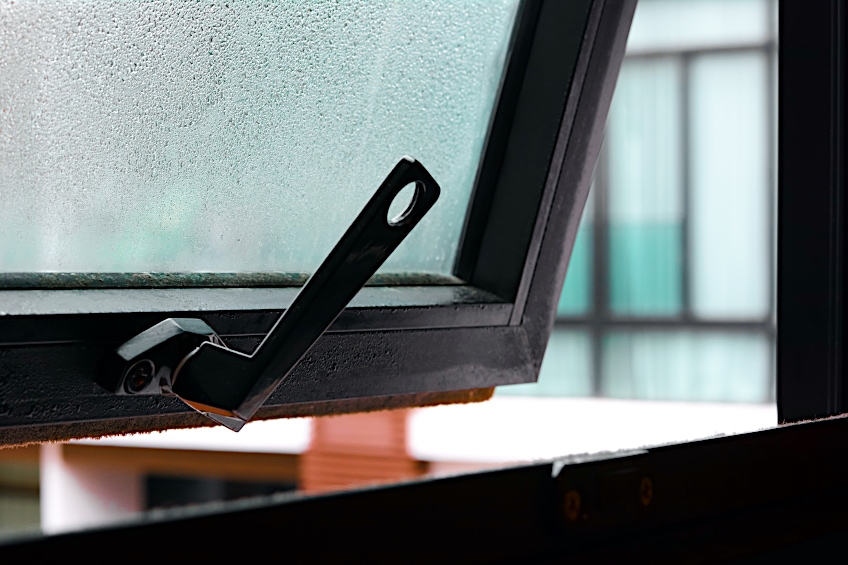
Alternatives to Sharpies
If you are concerned about the chemicals in Sharpies or prefer a more eco-friendly option, there are alternative markers available on the market. Here are a few alternatives to Sharpies that you may want to consider:
- Water-based markers: Water-based markers use water as the primary solvent, making them safer to use and less harmful to the environment.
- Soy-based markers: Soy-based markers are made from renewable resources and are biodegradable.
- Non-toxic markers: Non-toxic markers are certified safe for use by children and adults and contain no harmful chemicals.

How Can You Properly Store and Dispose of Sharpies to Minimize Any Potential Risks?
Proper storage and disposal of Sharpies can help minimize any potential risks associated with the product. Here are some guidelines to follow:
- Store Sharpies in a cool, dry place away from direct sunlight and heat sources. Avoid storing them in high-traffic areas or areas where they could be knocked over or spilled.
- Keep Sharpies out of the reach of children and pets. The ink and fumes can be harmful if ingested or inhaled.
- Do not store Sharpies with food or beverages, as the ink and fumes can contaminate these items and make them unsafe to consume.
- When disposing of Sharpies, do not throw them in the trash or recycle bin. Instead, dispose of them in accordance with your local hazardous waste regulations. Check with your local waste management facility for specific guidelines on how to properly dispose of Sharpies in your area.
- If you have unused Sharpies that you no longer need or want, consider donating them to a local school or community center instead of throwing them away.
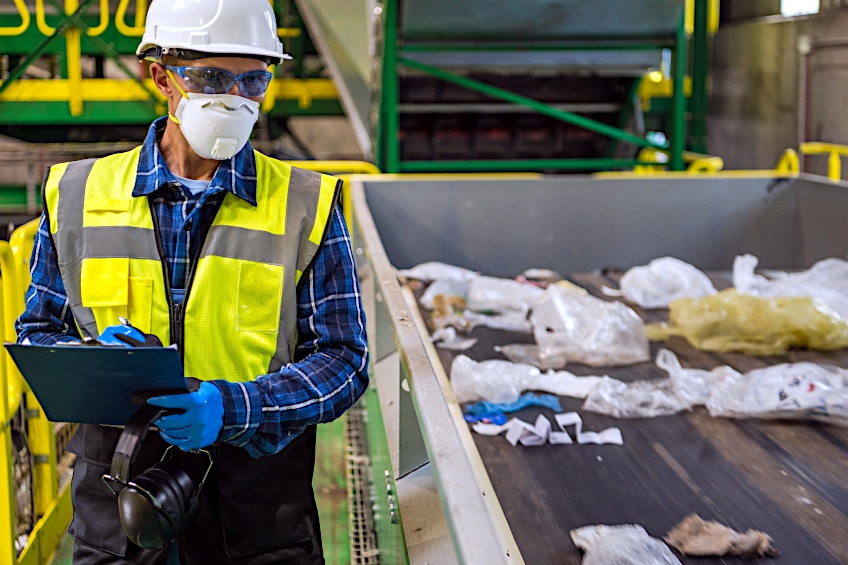
By following the above guidelines, you can help minimize any potential risks associated with Sharpies and ensure that they are used and disposed of in a safe and responsible manner. Sharpies are a versatile and convenient tool for a variety of purposes, but it’s important to understand their potential dangers. By taking a few precautions and using Sharpies safely, you can minimize the risk of adverse reactions and enjoy the many benefits of these popular markers.
Overall, Sharpies are not toxic when used as intended. They do contain chemicals that may be harmful if ingested or inhaled in large quantities. To use Sharpies safely, use them in a well-ventilated area, avoid prolonged exposure, store them properly, keep them out of reach of children and pets, and dispose of them properly. If you are concerned about the chemicals in Sharpies or prefer a more eco-friendly option, there are various options out there for you to choose from.
Frequently Asked Questions
Are Sharpies Safe to Use on Children’s Toys and Clothing?
Sharpies are not considered safe for use on children’s toys or clothing, as the ink may contain chemicals that can be harmful if ingested or absorbed through the skin. It is recommended to use non-toxic and washable markers for these purposes.
Can Sharpies Be Used for Body Art or Temporary Tattoos?
Sharpies are not recommended for use on the skin, as the ink can cause skin irritations or allergic reactions. There are specific markers and temporary tattoo products that are formulated for skin use and are considered to be safer alternatives.
Can Sharpies Be Used on Food or Food Packaging?
Sharpies are not intended for use on food or food packaging, as the ink may contain chemicals that can be harmful if ingested. Food-safe markers or labels are available for use in these situations.
Are Sharpies Safe to Use During Pregnancy?
Sharpies are generally considered safe for use during pregnancy. Make sure that the ink is not absorbed into the skin or body. In addition, it is always a good idea to use caution and follow the manufacturer’s instructions when using any products during pregnancy.
Can Sharpies Be Recycled or Disposed of Safely?
Sharpies should be disposed of in the regular trash, as the ink and plastic components may not be recyclable. It is recommended to check with your local recycling program to determine if Sharpies can be recycled in your area.
Larissa Meyer is a 32-year-old mother from Michigan and creative spirit since childhood. Her passion for painting and drawing has led her to an education as an illustrator and a career as a freelance graphic designer. She has a Bachelor of Fine Arts in Illustration and a degree in Graphic Design. Larissa is a talented artist who is able to master a wide range of styles and techniques to bring her artistic vision to life. Her greatest passion is currently fluid painting and epoxy resin art. Larissa’s love for art and her knowledge and experience in illustration make her the perfect Creative Director for our fluid-painting.com team. She is the creative head of our team and shares her passion and knowledge with our community through articles and tutorials.
As a mother of a 2-year-old daughter, Larissa also understands the importance of fostering creativity in early childhood. She uses her experience and knowledge to help other parents inspire their children and develop their artistic skills as well.
Learn more about Larissa Meyer and about us.

